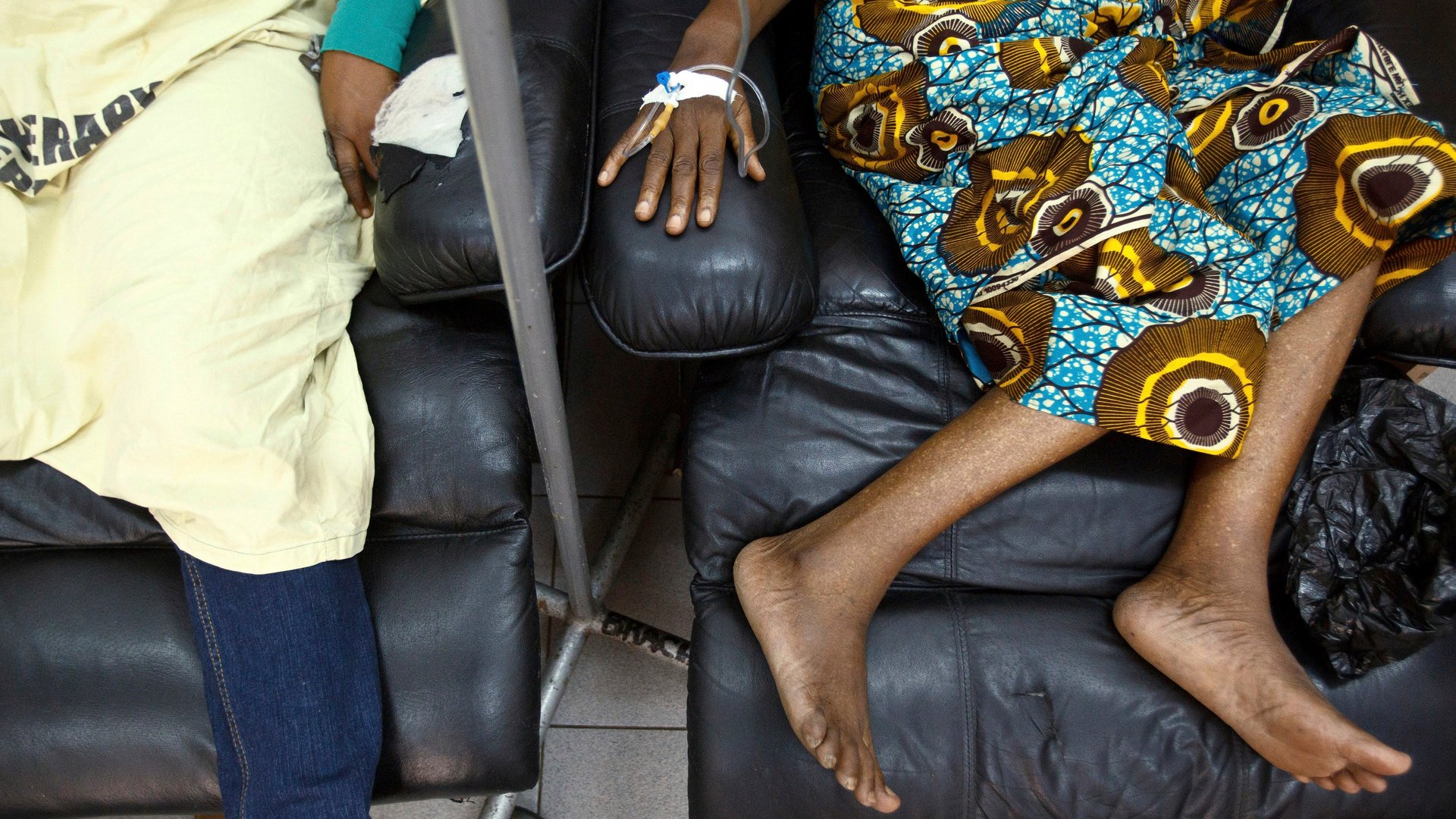Sharing data could help African governments reduce the cost of cancer treatment
Cancer is becoming more common across Africa, but the continent’s doctors and policy makers are barely equipped to provide adequate treatment. New cancer cases are expected to double by 2030 to around 1.3 million, according to an American Cancer Society (ACS) study (PDF). If national cancer treatment strategies aren’t fixed, only 10% of patients will receive treatment, including basic pain medication.


Cancer is becoming more common across Africa, but the continent’s doctors and policy makers are barely equipped to provide adequate treatment. New cancer cases are expected to double by 2030 to around 1.3 million, according to an American Cancer Society (ACS) study (PDF). If national cancer treatment strategies aren’t fixed, only 10% of patients will receive treatment, including basic pain medication.
The data is scarce, and the resources needed to deal with the problem even more so. What we do know is that there were 512,400 cancer deaths in 2008, and 681,000 new cases of cancer in that year, according to the ACS. That number is much lower than in the developed world, but the concern is it’s rising—and there’s a severe lack of proper treatment. In addition, few countries have working cancer registries, making it difficult to track diagnoses and treatment.
Even worse, a critical lack of oncologists and even fewer treatment centers makes treating cancer even more challenging. When designing a treatment system, oncologists have borrowed from the US and Europe, which has proven ineffective in adapting to African healthcare needs, says Meg O’Brien, director of Global Cancer Treatment for the ACS. African cancer specialists, she says, don’t have access to the medical resources such as pathology and imaging that their US counterparts have. And where treatment is secured, public health officials find themselves overpaying by about 30% thanks to a lack of transparency in the cancer treatment market, according to ACS research.
IBM’s pro-bono project Health Corps just released a new data tool it thinks can help alleviate these issues: ChemoQuant—developed in partnership with the American Cancer Society and the Clinton Health Access Initiative, and with feedback of local oncologists and health ministries— is an easy-to-use platform that helps health ministries share information so they can get the right treatments to the right patients. It’s designed to be something of a life saving “calculator.”
“It’s really just a tool that helps government quantify how much of each product they need in order to provide effective treatment,” said O’Brien.
ChemoQuant uses IBM analytics and cloud technology to collect and sorting all sorts of data—patient numbers, types of cancer, tumor markers, cancer stages, and other factors—and then apply the back-of-the-envelope calculations that pharmacists and doctors typically use to forecast the quantity drugs they need, except at a much bigger scale. This, O’Brien explains, can illuminate which treatments a given region or health care facility actually needs.
It’s an open platform that should allow health care workers to compare prices, drug treatments, and manufacturers. The ultimate goal is for various national ministries to work together, negotiating prices and ordering drugs as a regional bloc. Developers hope to launch ChemoQuant in Ethiopia and Rwanda as soon as next year, and will then roll it out in other regions.
For a long time, health ministries have focused on treating communicable diseases like tuberculosis and AIDS, and now find themselves woefully ill-prepared to fight non-communicable diseases like cancer. Just procuring chemotherapy drugs is challenging.
“The market for cancer treatment right now in sub-Saharan Africa is extremely dysfunctional,” says O’Brien. “There’s a lot of inefficiency in the market and that translates into expensive products so governments are paying more than they should and so they’re not getting the products they need.”
The ACE tried to figure out how much sub-Saharan African countries were spending on chemotherapy drugs, and it wasn’t easy. The organization could only get information on seven countries. From these (including Nigeria, Ethiopia, and Tanzania), the ACS estimates countries in this region spend just $28 million annually for chemo drug procurement. Many of the large rug suppliers see these small and inconsistent orders as too risky to fill, so sometimes governments have no choice but to work with suppliers who mark up the price along the distribution chain, and others who stock sub-standard products. For example, some medicines in Tanzania cost 50% more than in most countries, according to the ACS. But if several countries with common needs came together to buy in bulk, they could purchase directly from the supplier, lowering costs and ensuring the quality of medication, says O’Brien.
Still, gaps in data on cancer in Africa will remain a challenge, even for ChemoQuant. The hope is that as more governments and practitioners use the tool, the more information will be available—and the better the cancer treatment strategy in sub-Saharan Africa will become.